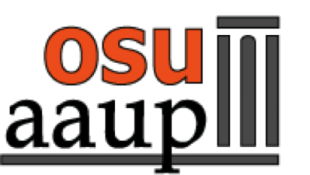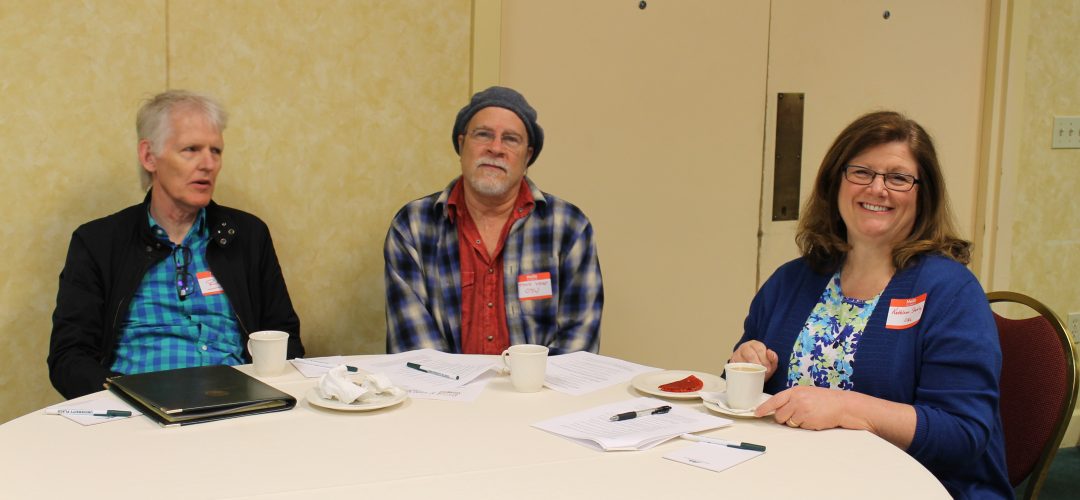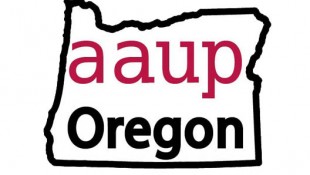
by Tony Vogt, OSU-AAUP activist
AAUP-OSU, in conjunction with the The Alliance for a Socially Just University, recently organized a Q & A with Howard Bunsis (via google hang-out) as a follow-up to his visit to OSU in February. The Q & A was attended by 25 or more students, faculty, classified staff, and organizers. Howard was great – he spoke with us for an hour from Michigan, on the evening (as it turns out) of his wife’s birthday (but they’d already celebrated). We had Howard’s slides up and running on another screen so that as folks posed questions, he could direct us to specific slides as he answered the questions. He was eloquent and inspirational (and funny, of course), and really encouraged us to build on the Alliance for a Socially Just University to create more collaborations and collective actions with students, staff, and faculty together.
After the Q & A we stayed to discuss next steps. Five people – students, staff, and faculty – volunteered to work together on an infogram that synthesizes and highlights some of Howard’s most provocative points about the disconnect between OSU’s ostensible mission and its spending priorities. This will be a document that can be widely disseminated, and in particular will be left in the hands of the Board of Trustees at their meeting on June 2 (“Student Success” is the Board’s theme for that meeting). The infogram will connect the highlighted points with particular slides from his presentation here. ASAP is intending to testify at the Board meeting, with their own perspective on “student success” (sections cancelled, growing class size, fewer instructors, crippling debt, etc.), and will send out calls for support and testimony from faculty and others in the Alliance. An Alliance member proposed that we all sit down together and outline an organizing campaign as a coalition, with goals and benchmarks. There was general enthusiasm for the idea, and we thought that students, staff, and faculty producing this info gram together was a step in that direction (with more to come).
Share the post "OSU: next steps in taking on budget priorities"



